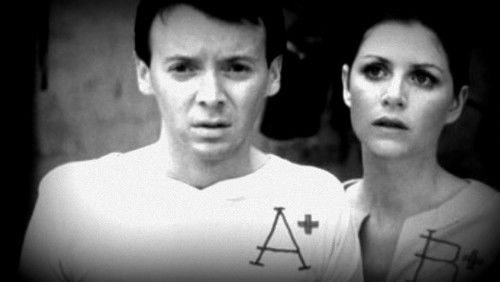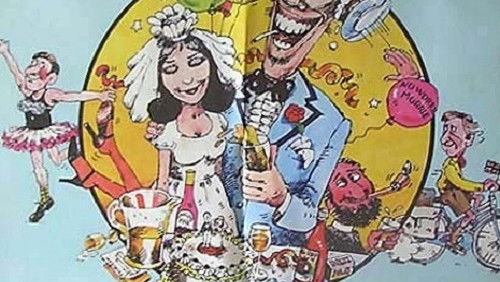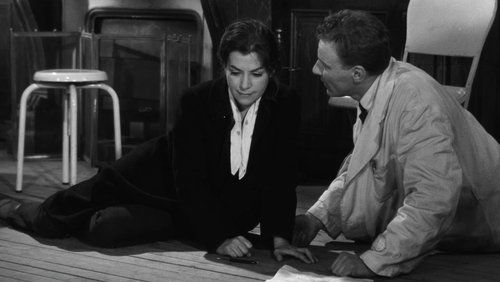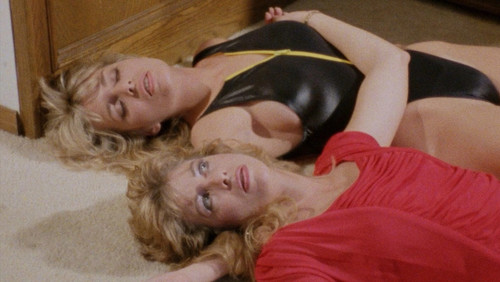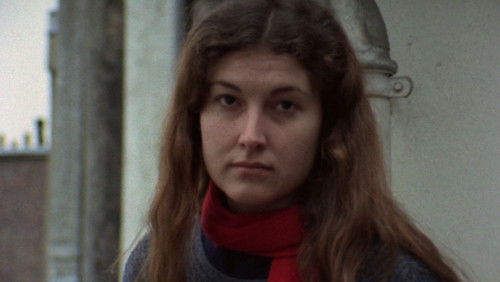Beau Brummell – Rebell und Verführer (1954)
37KBeau Brummell – Rebell und Verführer: Directed by Curtis Bernhardt. With Stewart Granger, Elizabeth Taylor, Peter Ustinov, Robert Morley. In 1796, Captain George Bryan “Beau” Brummell of the 10th Royal Hussars Regiment offends the Prince of Wales with his straightforward outspokenness and gets fired from the Army but is chosen as the Prince’s personal advisor.
“Stewart Granger, in his prime, was damned by being too handsome and too British. It is fascinating to see the way he was used in films in England in the late 1940s and films in Hollywood in the 1950s. His countrymen recognized he was good looking, and muscular, but while he could play an adventurous rug dealer in CAESAR AND CLEOPATRA, it was a supporting part (the male lead was the less handsome looking, but greater actor, Claude Rains). In CAPTAIN BOYCOTT, he played an Irish farmer and horse racer (there the title character was a supporting character – played by Cecil Parker). In BLANCHE FURY he was a scheming murderer after an estate, based on the 19th Century killer James B. Rush. In THE MAN IN GREY he was one of a pair of doomed lovers (and the main role was a Regency buck villain played by James Mason, who in venting his anger on Margaret Leighton for her evil gained the audienceu0026#39;s support). In short, Grangeru0026#39;s English roles were a wide variety of types (they also included the violinist Paganini, and the unfortunate courtier Count Koenigsmarck). He had a wide variety of parts, and sometimes was not at the center of his films. u003cbr/u003eu003cbr/u003eHollywood was determined that he was at the center of the films. At his best (KING SOLOMONu0026#39;S MINES, YOUNG BESS, SCARAMOUCHE) he was given good material, and good direction, and some humor (in SCARAMOUCHE anyway). But he was soon straight jacketed into costume films no matter how weak they were. Granger did occasionally break away from sword and leotard flicks, like ALL THE BROTHERS WERE VALLIANT and THE LAST HUNT and (a little later) NORTH TO ALASKA – a welcome comic part. But most of his Hollywood films were like BEAU BRUMMEL and FOOTSTEPS IN THE FOG: Weak stories with Granger pushed into British historical costumes.u003cbr/u003eu003cbr/u003eBEAU BRUMMEL had been a play written at the turn of the century by Americau0026#39;s leading dramatist of the day, Clyde Fitch. Forgotten (somewhat unjustly today), Fitch was usually a social comedy writer. His best known comic play (not revived for many decades) was a vehicle for a young actress named Ethel Barrymore called CAPTAIN JINKS OF THE HORSE MARINES. After watching Barrymore pursue the actor portraying Captain Adolphus Jinks (yes, thatu0026#39;s his name) for two and a half hours, the play was so successful that Ethel added a line at the end to still the demands for encores: u0026quot;Thatu0026#39;s all there is, there isnu0026#39;t anymore.u0026quot; Ironically, due to savage critics like Brooks Atkinson, Fitchu0026#39;s plays are rarely staged, so that final line is better remembered than itu0026#39;s play. u003cbr/u003eu003cbr/u003eA number of years back (about 1986 or so) a group of female actors put together a review, called u0026quot;The Clubu0026quot; (I believe that was the name). They were dressed in turn of the century clothing as male members of a club. Part of the review was a one act play of Fitchu0026#39;s. The critics felt it was quite well acted and even entertaining.u003cbr/u003eu003cbr/u003eFitch was known for historical dramas as well. He wrote one on NATHAN HALE. He also wrote this play, BEAU BRUMMEL, for Richard Mansfield. It is actually a study in a dandyu0026#39;s fall from u0026quot;greatnessu0026quot; or social fame into tragedy. The real Brummell was to lose his social position, his fortune, his friendship with George, Prince of Wales (u0026quot;Prinnyu0026quot; or u0026quot;Florizelu0026quot; – later George IV), and finally his sanity. The original play was grim. For an actor like Mansfield, who reveled in roles that emphasized opposites (the original u0026quot;Dr. Jeckyll and Mr. Hydeu0026quot;) he must have enjoyed going from plushy costumes to rags. The 1924 film version with John Barrymore as Brummel is closer to the original.u003cbr/u003eu003cbr/u003eBrummel was a leader of social fashion. One of the Regency figures (including his u0026quot;fat friendu0026quot; the Prince) who created the style known as u0026quot;Regencyu0026quot; that is for the period of 1795 to 1837. He influenced the Prince about wardrobe and social behavior – so much that George was called u0026quot;The First Gentleman of Europeu0026quot;. But he had no political influence. He probably had no political ideas of importance at all.u003cbr/u003eu003cbr/u003eThe film tries to make him more important historically than he was. He was a fop who briefly influenced culture – but he did not confront William Pitt the Younger as this film suggests. In fact Prince George was not the best person to try to influence politically at all. Although in his youth he was frequently seen with Whig figures like Charles Fox (Peter Bull in the film) or Richard Sheridan, this was to spite his Tory father George III (Robert Morley in this film). If you saw that better historical film, THE MADNESS OF KING GEORGE III, the poisonous relationship of the King and his heir was shown quite well. As Prince George grew older, his basic conservatism grew. By the time he was acting Prince Regent and then King (1811 – 1820; 1820 – 1830) he was firmly in the Tory ranks. But Pitt the Younger was dead by then.u003cbr/u003eu003cbr/u003eAs mentioned in another comment on this thread, Morley as the mad King, and Ustinov as the Prince (later King) were the best performers in this film. Poor Granger tries, but he has a terrible script to work with. They should have kept to the original – it might have been worth while as a film. For the sake of Ustinov and Morley I am giving this film a 6 out of 10.”
